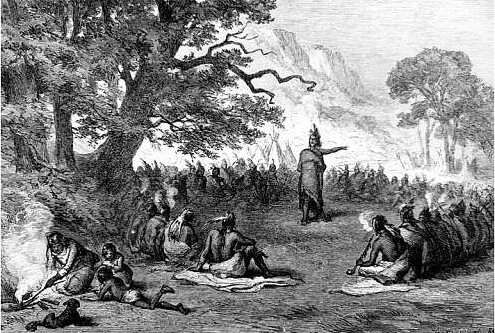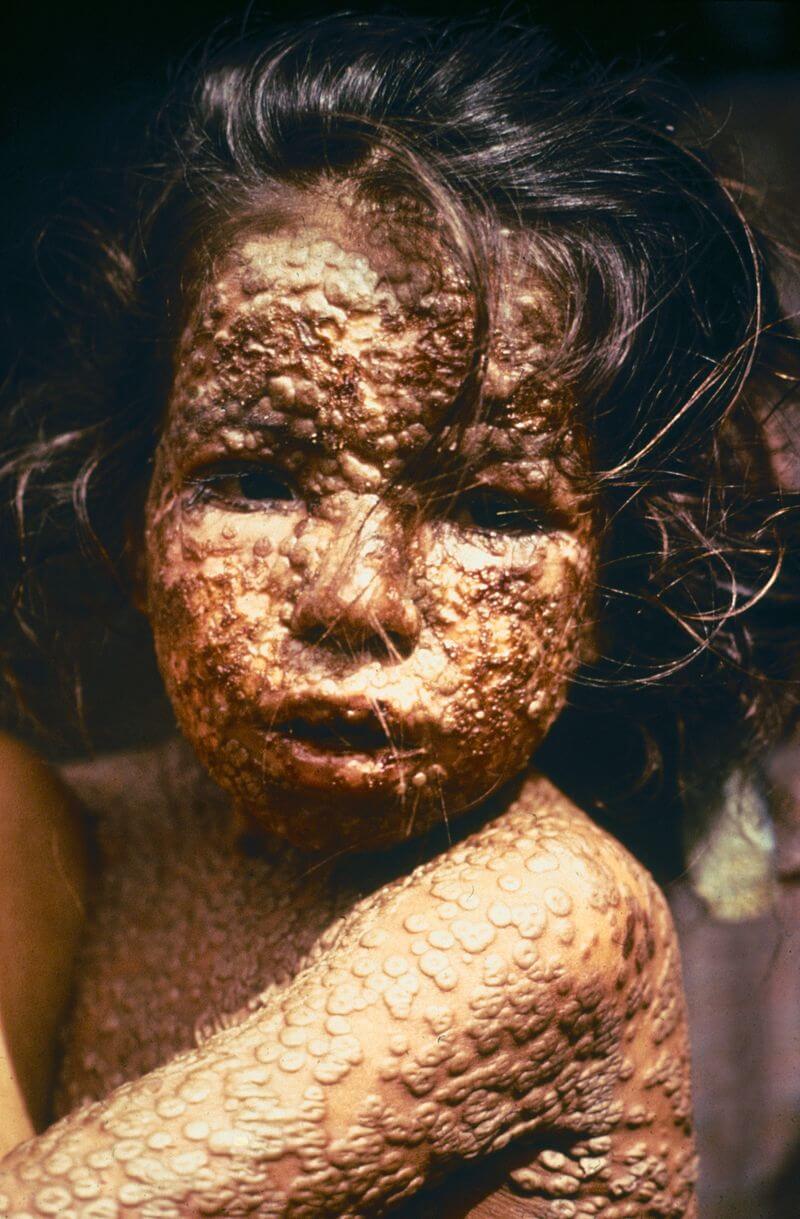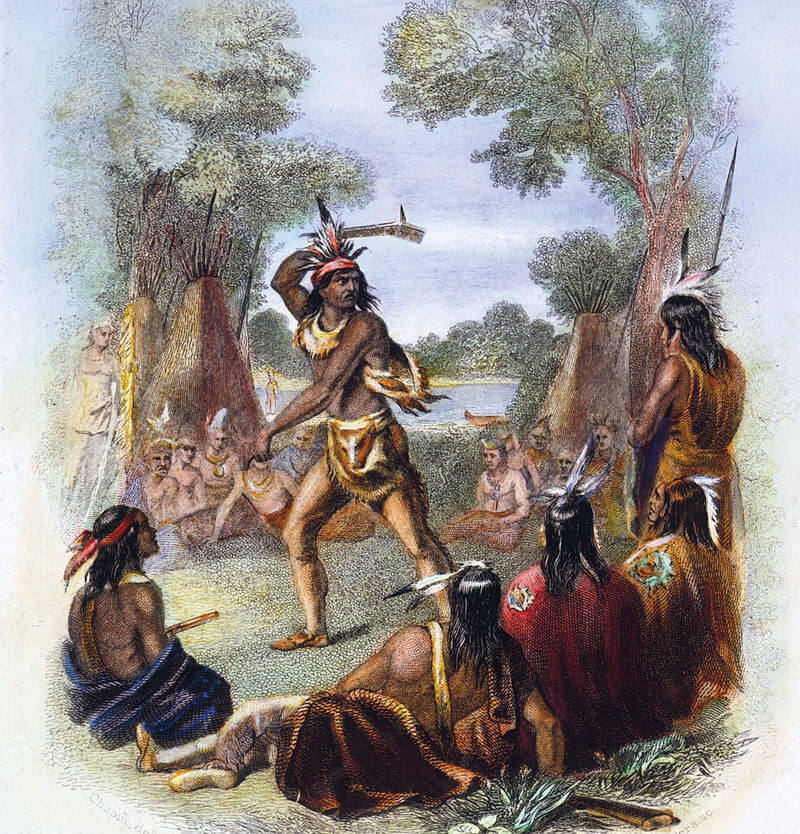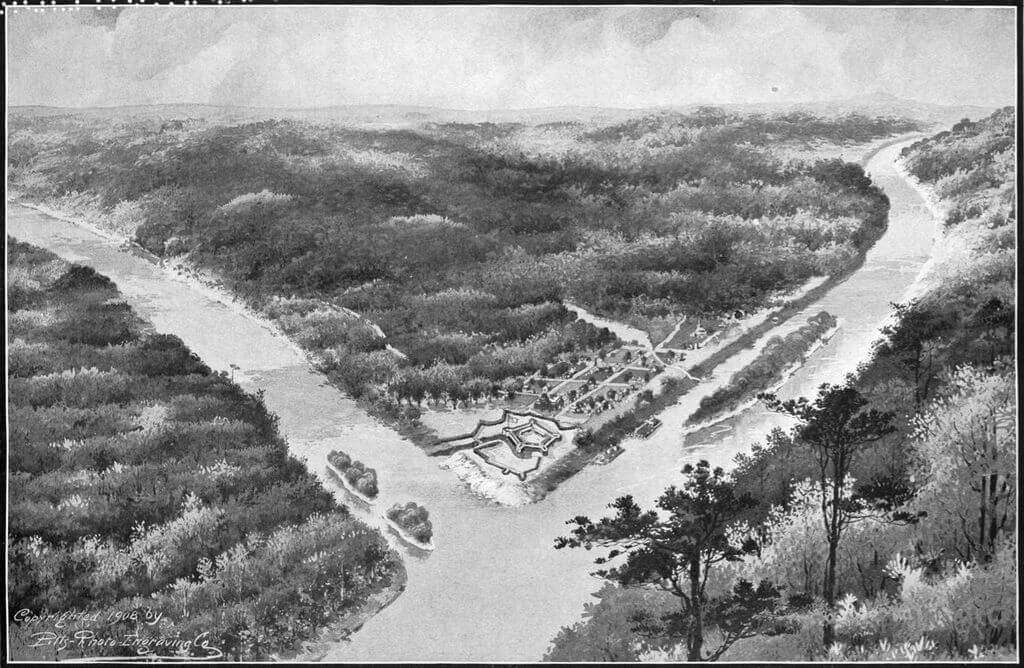Germ warfare is defined as “the use of biological toxins or infectious agents with the intent to kill or incapacitate as an act of war.” These biological agents are quite literally used as deadly living weapons.
Germ warfare is by no means a modern concept, and attempts at it have been practised since antiquity. In the 6th century BCE, one of the oldest civilisations known to man, the Assyrians, used a primitive form of germ warfare to poison enemy wells with ergot, a parasitic fungus that causes delirium, seizures, and gangrene in its victims.
One of the most famous examples of historical germ warfare is the use of the plague by the Mongol warriors of the Golden Horde. During their siege of the city of Kaffa in the Crimea, many of the Mongol army became infected with the Black Death. Not the type to miss an opportunity, the Mongols loaded the dead bodies of their infected comrades onto their siege engines and hurled them over the city walls in an attempt to infect the populace within. These actions also possibly contributed to the spread of the Black Death into Europe.
Another less well-known example is the use of smallpox by the British Army against Native Americans during the Siege of Fort Pitt in 1763.
The French and Indian War
To understand the events of Fort Pitt, we have to go back almost a century and cross the Atlantic Ocean to Europe. Anglo-French Wars had been waged intermittently in Europe since the French invasion of Normandy in 1202 CE, but France and Great Britain had been participating in a series of wars in Europe that extended to North America almost continuously since the late 1600s.
The largest of these wars was the Seven Years’ War, a global conflict fought between two large coalitions, one led by the Kingdom of Great Britain and the other by the Kingdom of France, between 1756 and 1763. It was during this war that France eventually lost New France in North America to Great Britain. The American theatre of this war is referred to as the French and Indian War, and it involved not only the British and the French but also the Native American populations.
In 1758 the British colonials signed a treaty with the chiefs of the 13 Native American nations in Easton, Pennsylvania. As part of this agreement, the Native Americans promised not to fight on the side of the French in return for land and guaranteed that the British would refrain from establishing colonial settlements west of the Allegheny Mountains after the conclusion of the war.
The French and Indian War ended in 1760 when British General Jeffrey Amherst captured Montreal, the last important French settlement. The British, however, did not fully honour the spirit of the treaty and proceeded to occupy forts in Ohio County and the Great Lakes region and treated the Native Americans as if they were a conquered people.
Pontiac’s War
Amherst’s failure to honour the treaty greatly offended the Native Americans. An Odawa war chief named Pontiac held a large council on April 27th, 1763, urging listeners to rise against the British. At the council, Pontiac managed to gather the support of 300 followers to capture Fort Detroit, which was 10 miles to the North.
War broke out and rapidly spread throughout the region, and almost a thousand more warriors from half a dozen different tribes joined Pontiac’s side. Eight British forts were quickly captured, and others, including Fort Detroit and Fort Pitt, were successfully besieged.

Pontiac’s council on April 27th, 1763, by Alfred Bobbet
Smallpox at Fort Pitt
Following the outbreak of Pontiac’s war, survivors of the attacks at other British outposts around the region fled to the safety of Fort Pitt, an important strategic location in the British control of the Ohio Valley and Pennsylvania.
This influx of people meant that almost 550 people were now crowded inside, including over 200 women and children. Possibly due to these cramped and overcrowded conditions people began to fall ill with smallpox.
The Swiss-born British officer in charge at Fort Pitt, Colonel Simeon Ecuyer, wrote that:
“We are so crowded in the fort that I fear disease; the smallpox is among us.”
Smallpox is a horrific and highly contagious illness that initially causes high fevers, vomiting, headache, and severe abdominal and back pain. These symptoms subside after a couple of days, and then a few days later, the renowned rash appears. The smallpox rash starts on the face and hands and then rapidly spreads to cover the body. Within two days of appearance, the rash turns into abscesses that are filled with fluid and pus. These abscesses then break open and scab over, the scabs eventually falling off, leaving pit mark scars. This horrible process takes a month or so, and the infected person is contagious until the scabs have all fallen off. The major form of the disease has a mortality rate of 30-35% and has several serious complications, including scarring, blindness, and limb deformities.

A child infected with smallpox in Bangladesh, 1973
Amherst’s Idea
The Native Americans were causing enormous problems for the British forces, but Amherst had devised an idea of how the tables could be turned on them. He wrote the following in a letter to Colonel Henry Bouquet, who was stationed at Lancaster, Pennsylvania:
“Could it not be contrived to send the small pox among the disaffected tribes of Indians? We must on this occasion use every stratagem in our power to reduce them.”
Bouquet responded to Amherst with the following:
“I will try to inoculate the Indians by means of blankets that may fall in their hands, taking care however not to get the disease myself. As it is pity to oppose good men against them, I wish we could make use of the Spaniard’s method, and hunt them with English dogs. Supported by rangers, and some light horse, who would I think effectively extirpate or remove that vermine.”
To which Amherst replied:
“You will do well to try to inoculate the Indians by means of blankets, as well as to try every other method that can serve to extirpate this execrable race. I should be very glad your scheme for hunting them down by dogs could take effect, but England is at too great a distance to think of that at present.”

Pontiac with a war hatchet in 1763 (artist unknown)
The Siege of Fort Pitt Begins
On June 22nd, 1763, Pontiac and his warriors attacked Fort Pitt. The Fort, however, was too strong to be taken, and a siege began. The situation became increasingly grim within the Fort; the effects of the siege, the overcrowded conditions, and the smallpox outbreak made life very miserable for those trapped inside.

Artist’s impression of Fort Pitt in 1759 (artist unknown)
Officers at the besieged Fort had already attempted what Amherst and Bouquet were discussing, apparently of their own volition. During a parley held at Fort Pitt on June 24th, 1763, Ecuyer gave two Native American emissaries blankets and a handkerchief that had been exposed to smallpox. William Trent, a local trader and militia commander recorded their visit in his journal:
“Out of our regard for them, we gave them two blankets and an handkerchief out of the Small Pox Hospital. I hope it will have the desired effect.”
On August 1st, 1763, most of the Native Americans broke off the siege to intercept 500 British troops marching to help the Fort under the command of Bouquet. The two sides met at the Battle of Bushy Run, where although the British suffered heavy losses, they defeated the Native Americans. They then successfully relieved the garrison at Fort Pitt and ended the siege on August 20th, 1763.
Smallpox in the Ohio Valley
There is disagreement between Historians as to exactly how much damage the attempt to spread smallpox at Fort Pitt actually had, and there are eyewitness accounts that smallpox and other diseases had already plagued the Ohio Native Americans since 1759.
Historian Francis Jennings supported the theory that it did have an effect and concluded that the attempt was:
“unquestionably successful and effective and inflicted great damage to the Native Americans.”
Others, though, feel that it made little difference to the situation, and Historian Michael McConnell wrote that:
“Ironically, British efforts to use pestilence as a weapon may not have been either necessary or particularly effective.”
McConnell noted that smallpox had already entered the territory by other means and was already infecting the Native American population.
What is not under debate is how devastating the disease went on to be, regardless of the attempts to spread it using germ warfare at Fort Pitt. It is estimated that anywhere between 500,000 and 1.5 million Native Americans died from smallpox during Pontiac’s War and the years immediately afterwards.
Medical Exam Prep would like to thank Dr. Marc Barton for this guest blog post.
About Dr. Marc Barton
Dr. Marc Barton qualified from Imperial College School of Medicine in 2001. Since that time he has worked in a variety of different medical specialities. He worked as a GP partner from 2006 until 2008 and more recently as a higher specialist trainee in Emergency Medicine.
You can read more posts on the History of Medicine from him at his blog: Past Medical History





